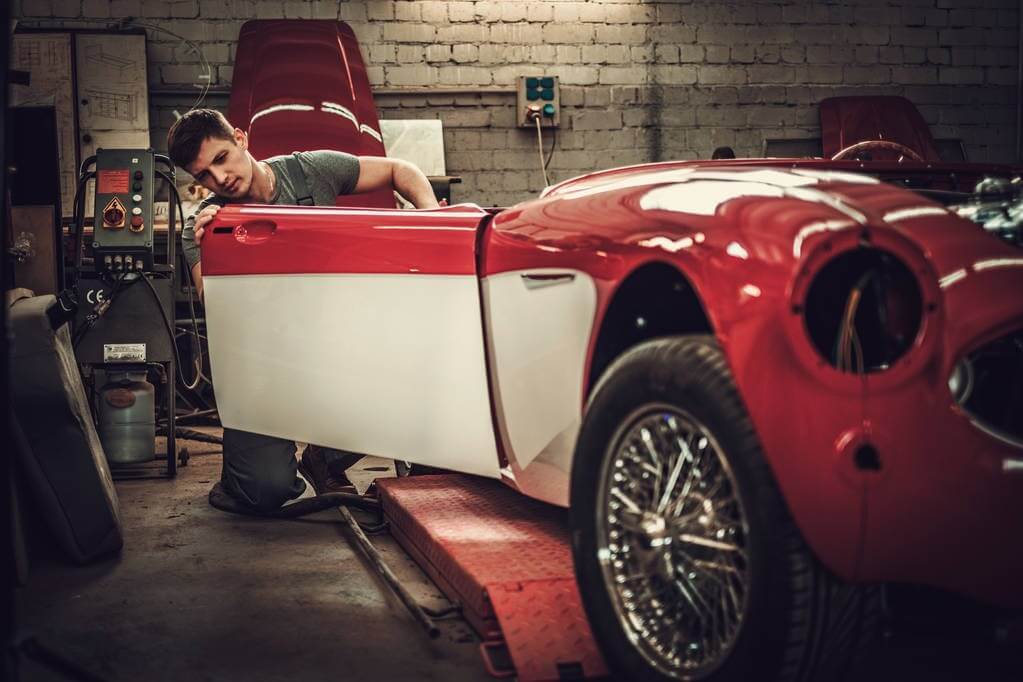Know what is Auto Body fabrication? Why it’s significant in the Vehicle restoration process.

- Auto Body fabrication is the process of creating or repairing body parts and components for cars in the automotive industry, whether for renovation purposes or for building distinctive vehicles.
- Fabricating parts from scratch, restorers can ensure that the vehicle remains true to its original design and specifications.
- Auto body fabrication is an essential part of the vehicle restoration process, allowing for the repair, replacement, and customization of vehicle body parts.
- Using various techniques like sheet metal fabrication, sheet metal bending, bead rollers, and Tools like Pipe and Tube Fabrication Tools, Auto Body Hand Tools, and Power Tools to shape materials like sheet metal, Aluminium, and plastic.
- The automotive industry is constantly evolving, and car fabrication plays a wide role in shaping the future of the industry.
Which are Materials handled in the Auto body Fabrication process?
- Steel: Steel is used in auto body fabrication because of it is strong in strength and durable material.
- It is used for making the car’s body frame, engine components, and suspension systems.
- Aluminum: Aluminum is a lightweight material so often it is used in the construction of modern cars.
- It is used for making wheels, body panels, and engine blocks.
- Carbon fiber: Carbon fiber has high strength and is a lightweight material.
- That is commonly used in high-performance vehicles. It is used for making body panels.
- Plastics: Plastics are used in the production of various automotive components such as interior parts, and door panels.
- The selection of materials used in car fabrication depends on various factors, including the performance requirements, cost, and availability of the material.
Application of fabricator in Car Restoration Shop:
- Auto body fabrication refers to the process of designing, building, and assembling various components of a car or vehicle.
- It plays a critical role in the automotive industry and is used in a wide range of applications.
- Here are some examples of the applications of auto body fabrication in the automotive industry:
- Body and Chassis Fabrication: The Production of car frames or body structures of cars is one of the most common applications of auto body fabrication. This involves cutting, welding, and shaping metal sheets to create the framework of the car.
- Vintage Car Restoration: Similar to body and chassis fabrication vintage car restoration is also an important aspect. It involves cars renovation and replacing parts as needed
- Exhaust Systems: Auto body fabrication is also used in the production of exhaust systems for cars. For improving the Sound and performance of the vehicle custom exhaust pipes are created.
- Suspension Systems: Auto body fabrication is used to produce various suspension components such as shock absorbers, struts, and springs. The suspension system is an essential part of any vehicle.
- Roll Cages: Roll cages gives additional protection to the driver and passengers if any accident happens.
- Roll cages are also used to provide high-performance cars. Auto body fabrication is used to create these cages using high-strength materials such as steel or Aluminium.
When it comes to selecting car fabrication tools, it’s important to ensure quality and optimal performance. With respect to that Woodward, Fab Tools stands out as an excellent choice for streamlining their automotive industry work, including car renovation and modification, with ease and efficiency.
Related Post:
-
Sheet Metal Fabrication Trends 2024: What to Watch For
-
Sheet Metal Bend Relief Guidelines: Ensuring Successful Fabrication
-
Cold Rolled Steel Sheets vs. Hot Rolled Steel Sheets: Which is Right for Your Project?
-
Essential Tools and Equipment for Ductwork Fabrication: Ensuring Efficiency and Quality
-
Sheet Metal Bending in Architectural Design: Transforming Buildings with Curved Metal